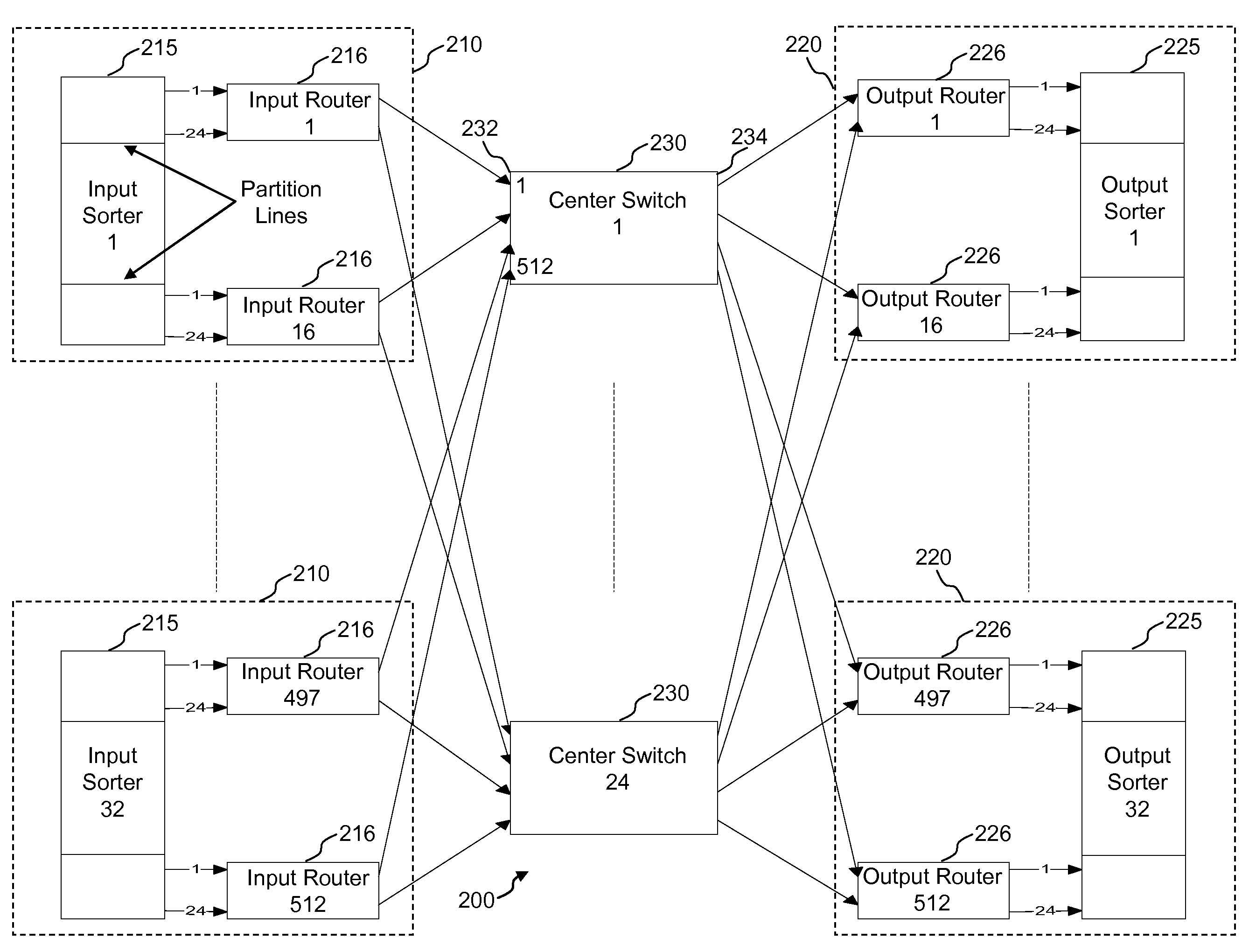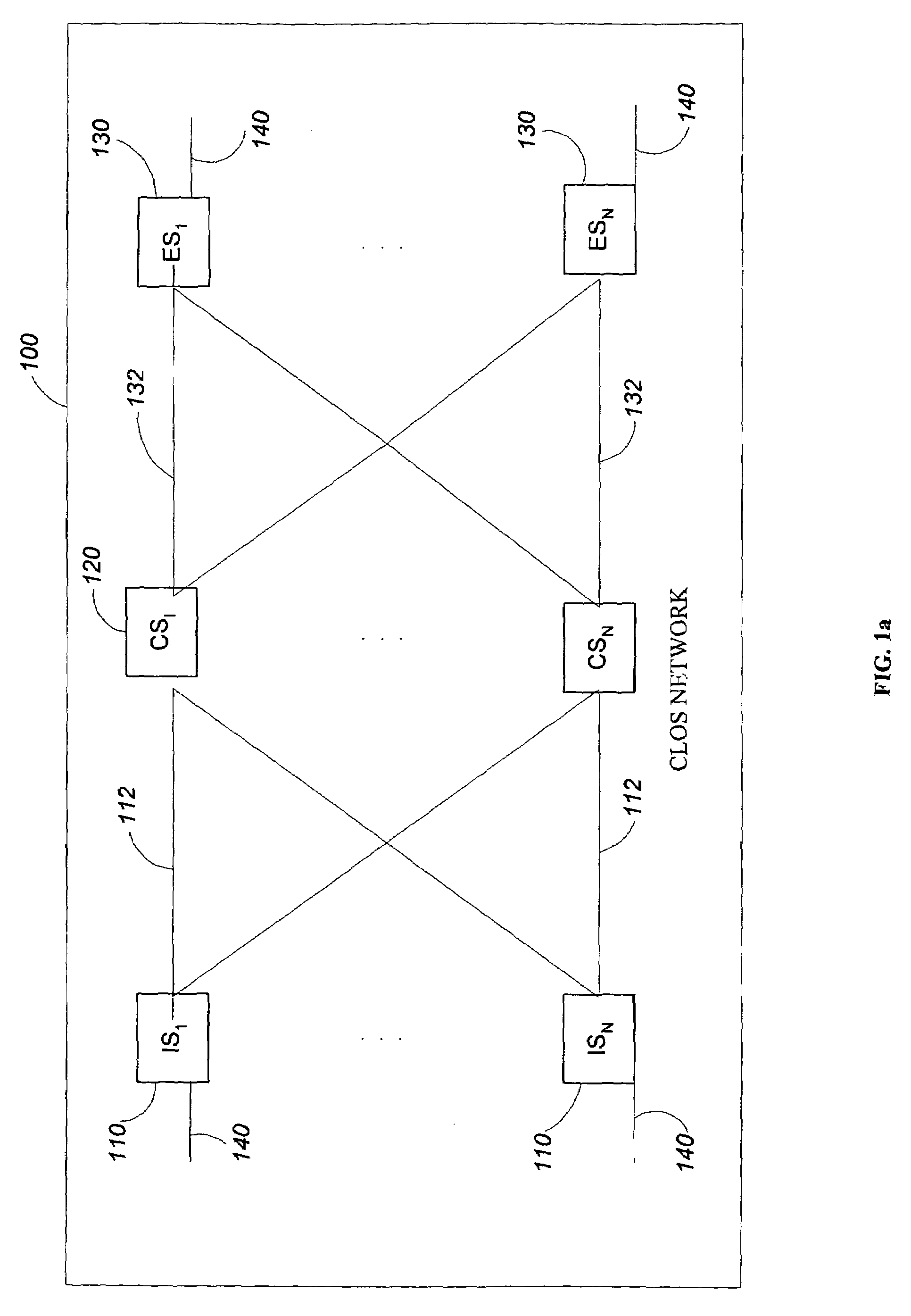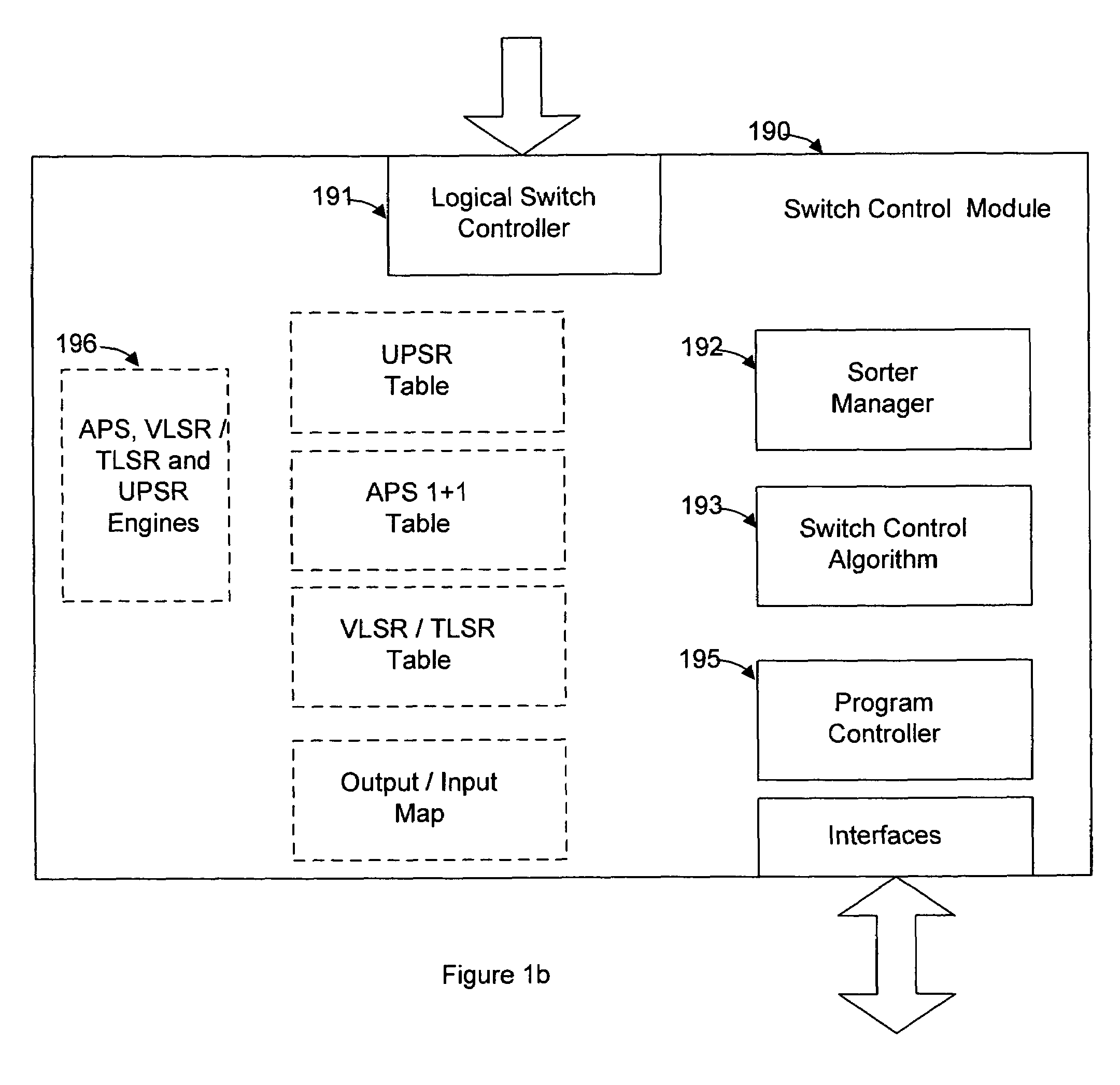Switching control mechanism for supporting reconfiguaration without invoking a rearrangement algorithm
a control mechanism and rearrangement algorithm technology, applied in data switching networks, digital transmission, transmission, etc., can solve problems such as the inability to maintain fixed networks, the complexity of compensating for switching events, and the difficulty of repeating control algorithms
- Summary
- Abstract
- Description
- Claims
- Application Information
AI Technical Summary
Problems solved by technology
Method used
Image
Examples
Embodiment Construction
[0025]In the following description, for the purposes of explanation, numerous specific details of an embodiment of the present invention are set forth in order to provide a thorough understanding of the present invention. It will be apparent, however, that the present invention may be practiced without some of these specific details.
[0026]A. Terminology
[0027]A switch element connects one set of data lines to another set of data lines. As described herein, the switch element may comprise ingress devices, center stage devices, and egress devices. Embodiments of the invention provide that the devices of the switch element form a Clos network.
[0028]An ingress device is a component of the switch element that can be configured to switch incoming communications from one or more data lines to one or more selected center stage devices, or to one or more selected center stage device ports.
[0029]An egress device is a component of the switch element that can be configured to switch communicatio...
PUM
 Login to View More
Login to View More Abstract
Description
Claims
Application Information
 Login to View More
Login to View More - R&D
- Intellectual Property
- Life Sciences
- Materials
- Tech Scout
- Unparalleled Data Quality
- Higher Quality Content
- 60% Fewer Hallucinations
Browse by: Latest US Patents, China's latest patents, Technical Efficacy Thesaurus, Application Domain, Technology Topic, Popular Technical Reports.
© 2025 PatSnap. All rights reserved.Legal|Privacy policy|Modern Slavery Act Transparency Statement|Sitemap|About US| Contact US: help@patsnap.com



